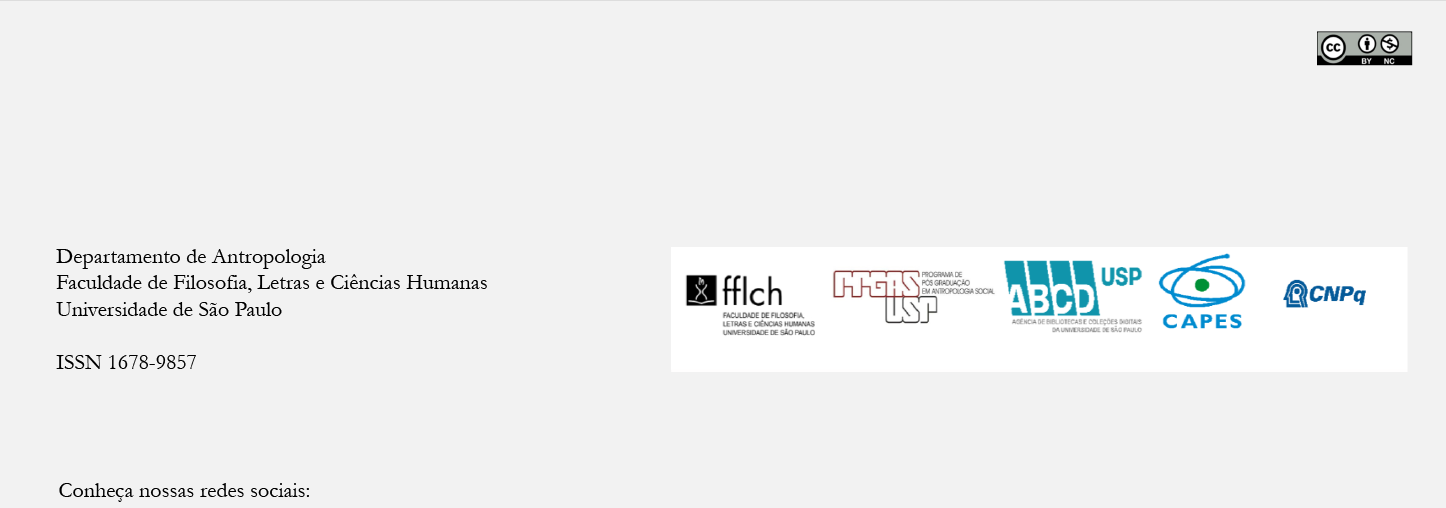Notes on Yanomami dreams
DOI:
https://doi.org/10.11606/1678-9857.ra.2022.197980Keywords:
Yanomami, dreams, image, nostalgia, deathAbstract
This article seeks to understand some aspects of Yanomami dreams, such as their relationship with the night and with the pei utupë – the “vital image”, one of the constituents of the Yanomami person. To highlight these connections, I present the daily life of a collective house and moments of a reahu intercommunity feast. I also touch on the myth of the origin of night and the notions of the Yanomami person and cosmos, seeking to demonstrate how the relationship between the night, the emergence of the ability to dream, and the feeling of longing, presupposes another relationship between the night and the manifestation of the pei utupë. I also try to demonstrate how the reahu intercommunity feast, when funeral rites are held, is a simulacrum of the heavenly life of the spirits of the dead (pore), the posthumous destiny of the Yanomami, the feast thus taking the form of a great dream.
Downloads
References
ALBERT, Bruce. 1985. Temps du sang, temps des cendres. Représentation de la maladie, espace politique et système ritual chez les Yanomami du sud-est (Amazonie brésilienne). Paris, Tese de Doutorado, Université Paris X – Nanterre.
ALBERT, Bruce; GOMEZ, Gale Goodwin. 1997. Saúde Yanomami. Um manual etnolingüístico. Belém, Museu Paraense Emílio Goeldi.
ALBERT, Bruce; MILLIKEN, William. 2009. Urihi a: A terra-floresta yanomami. São Paulo, Instituto Socioambiental; IRD.
ALBERT, Bruce. A floresta poliglota. Traduzido por: Vinícius Alves. 2018. Disponível em: https://subspeciealteritatis.wordpress.com/2018/11/05/a-floresta-poliglota-bruce-albert/
COCCO, L.; LIZOT, J.; FINKERS, J. 1991. Mitologia Yanomami. Ecuador, Ediciones ABYA-YALA e MLAL.
FERREIRA, H. P.; SENRA, E. B.; MACHADO, A. M. A. (Org). 2019. As línguas Yanomami no Brasil: Diversidade e Vitalidade. São Paulo. Instituto Socioambiental e Hutukara Associação Yanomami.
FRANCO JUNIOR, Hilario. 1998. Cocanha – várias faces de uma utopia. São Paulo, Ateliê Editorial.
GONÇALVES, Marco A. 2001. O mundo inacabado – Ação e criação emu ma cosmologia amazônica. Etnografia pirahã. Rio de Janeiro, Editora UFRJ.
KELLY, J. 2017. “On Yanomami ceremonial dialogues: a political aesthetic of metaphorical agency”. Jornal de la Société des Américanistes, v. 103, n. 1: 179-214.
KOPENAWA, Davi; ALBERT, Bruce. 2010. A queda do céu. Palavras de um xamã yanomami. São Paulo, Companhia das Letras.
LIZOT, J. 1974. El hombre de la pantorrilla preñada y otros mitos Yanõmami. Fundación La Salle de Ciencias Naturales. Caracas, Monografía N. 21.
LIZOT, J. 1988. O círculo dos fogos. Feitos e ditos dos índios Yanomami. São Paulo, Martin Fontes.
LIZOT, J. 1991. “Palabras en la noche – El diálogo Ceremonial, una Expresión de las Relaciones Pacíficas entre los Yanomami”. In: La Iglesia en Amazonas, Puerto Ayacucho, n. XII, v. 53: 54-72.
LIZOT, J. 1996. Introducción a la lengua Yanomami – Morfologia. Caracas, Vicariato Apostólico de Puerto Ayacucho.
LIZOT, J. 2004. Diccionario enciclopédico de la lengua yãnomãmi. Caracas, Vicariato Apostólico de Puerto Ayacucho.
LIZOT, J. 2007. “El mundo intelectual de lós yanomami: cosmovisión, enfermedad y muerte com uma teoria sobre em canibalismo”. In: FREIRE, Germán; TILLET, Aimé. (Ed.). Salud indígena em Venezuela. Caracas, Ediciones de la Dirección de Salud Indígena, pp. 269-323.
RAMIREZ, H. 1999. A prática do Yanomami. Boa Vista, Comissão Pró-Yanomami.
Downloads
Published
Issue
Section
License
Copyright (c) 2022 Revista de Antropologia

This work is licensed under a Creative Commons Attribution 4.0 International License.
Authors who intend to publish in this journal must agree with the following terms:
- a) Authors retain copyright and grant the journal the right of first publication. The work is simultaneously licensed under the Creative Commons Attribution License, which allows the work to be shared as long as the author and the initial publication in this journal are appropriately credited.
- b) Authors are authorized to sign additional contracts for non-exclusive distribution of the version of the work published in this journal (e.g., to publish it as a book chapter), as long as the author and the initial publication in this journal are appropriately credited.
- c) Authors are allowed and encouraged to publish and distribute their work online (e.g. on their personal webpage) after the editorial process, for this can generate productive changes as well as increase the impact and citation of the work. See The Effect of Open Access Publications.




